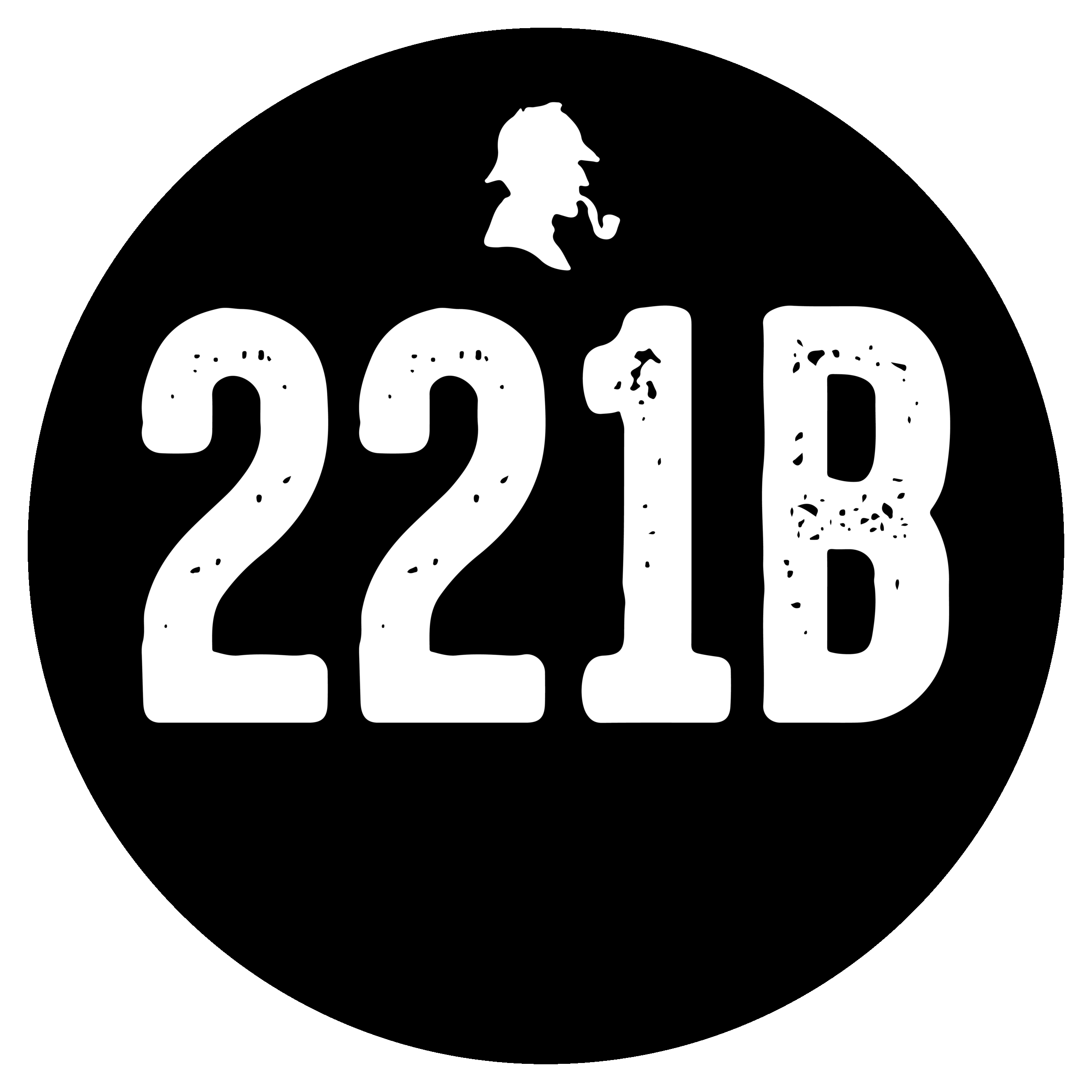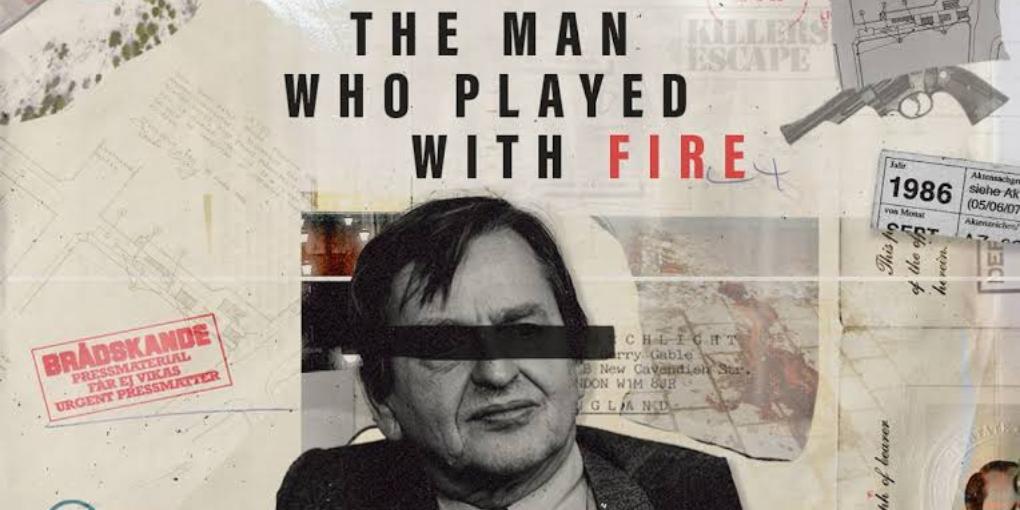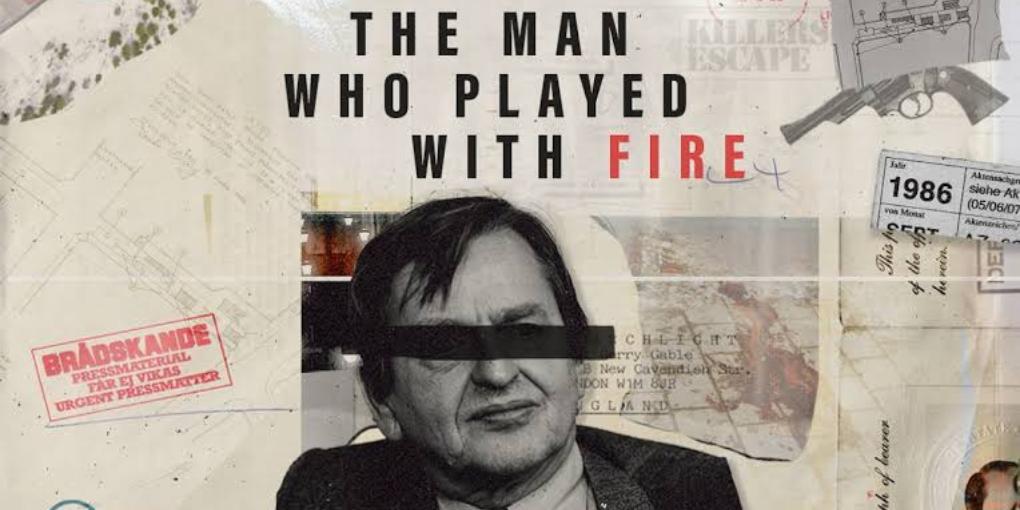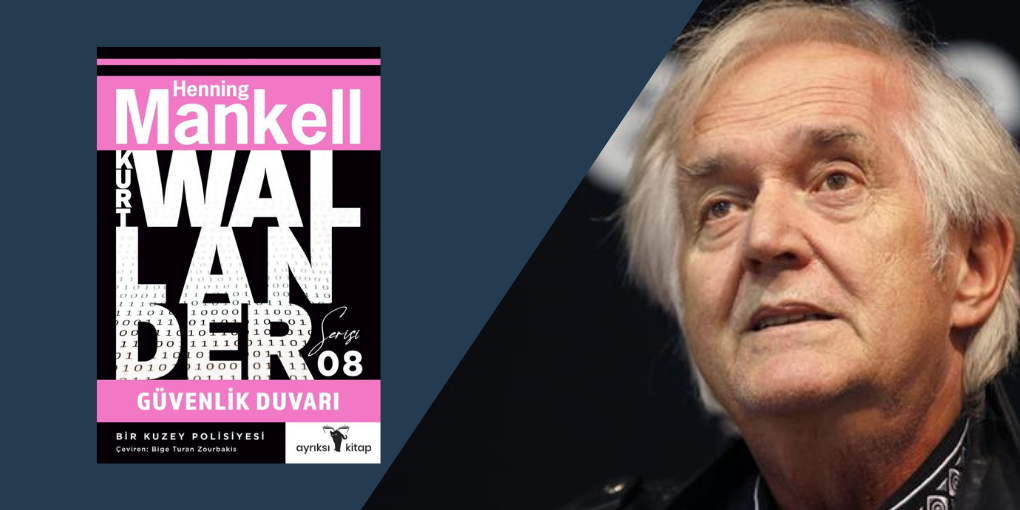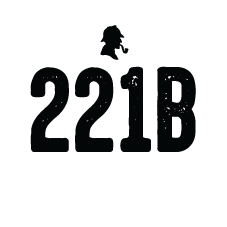Yoldaş Özdemir wrote in detail for the 39th issue of 221B about the documentary The Man Who Played with Fire and the Steig Larsson archive investigating Palme’s assassination.
BluTV and Discovery+ cooperation offers us very rich documentary content. From nature documentaries to paranormal events, what attracts me to this wide range of content is, of course, true crime documentaries…
You can come across dozens of pieces of content, such as criminal investigations, research on unsolved crimes, and conspiracy theories. Recently, one production is very remarkable: Stieg Larsson: The Man Who Played with Fire. I highly recommend you watch this production, which won the Best Documentary Award at the Monaco Film Festival this year.
The article contains spoilers, but documentary lovers know that spoilers cannot stop us from watching!
Seeing the name Stieg Larsson in a movie, TV series, or documentary is enough for me to watch it. Stieg Larsson, who died in 2004 at the age of 50 from a heart attack on the stairs of the newspaper where he worked, is the author of the beloved Millennium series and one of the most important names in Nordic Noir. Larsson, who wrote the first three books of this bestselling series in 41 countries, unfortunately, did not see his books published, read all over the world, and adapted to the big screen… Six books of the 10-book planned series were published in our country as The Girl with the Dragon Tattoo, The Girl Who Played with Fire, The Girl Who Kicked the Hornet’s Nest, The Girl in the Spider’s Web, The Girl Who Takes an Eye for an Eye, and The Girl Who Lived Twice.
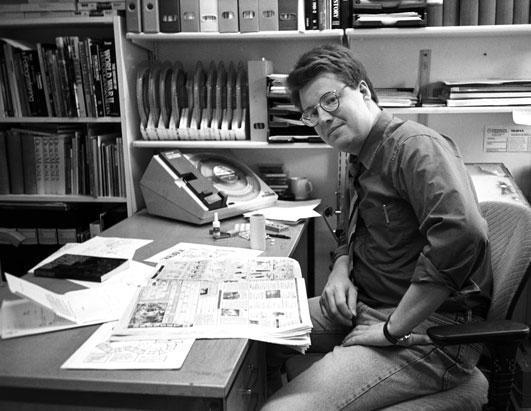
Stieg Larsson was actually a journalist, photographer, and socialist activist. He worked as a graphic designer at Sweden’s largest news agency, Tidningarnas Telegrambyrå, between 1977 and 1999. He founded the Expo Foundation to prevent the spread of white supremacy and the far right among young people and became editor of the foundation’s magazine, Expo. Larsson was known for his research on the far right in Sweden. This work was influential in uncovering racist organizations in Sweden. He published his book Far Right in 1991, where he examined national and international far-right and racist organizations. He focused especially on the Sweden Democrats party in Sweden, which was founded by Neo-Nazis; he did extensive research on this party, which was anti-immigrant and dreamed of a “pure white Sweden that was loyal to its traditions” instead of multiculturalism and which came second in the 2022 elections. He was a guest on panels and wrote articles about far-right and racist organizations, and therefore lived under death threats. This period of Larsson’s life is explored in the documentary Stieg Larsson: The Man Who Played with Fire. The documentary, directed by Henrik Georgsson, director of hit TV series such as Bron/Broen and Marcella, competed at the 2019 Sundance Film Festival.
The 2023 documentary Stieg Larsson: The Man Who Played with Fire was adapted from Jan Stocklassa’s 2019 novel The Man Who Played with Fire: Stieg Larsson’s Lost Files and the Hunt for an Assassin. Jan Stocklassa is a former diplomat and businessman. After he finished his diplomatic service in Prague, he published his first book, Gripen av Prague, in 2015. The book exposed corruption linked to Saab and British Aerospace’s attempts to sell Saab’s supersonic Gripen fighter jets to the Czech Republic. After the book, police investigations were initiated in seven countries. So what brought Stocklassa and Larsson together in a book and documentary?
In 2013, Stocklassa found 20 boxes in a warehouse in a building he was investigating in a Stockholm suburb. The name written on the boxes caused Stocklassa’s shock: “Stieg Larsson Archive.” When he browses through the boxes, he gets a second shock: “The Olof Palme Murder.”
Stieg Larsson had investigated the murder of Olof Palme, who was assassinated in 1986, for 10 years, archived hundreds of pieces of information and documents, and reached a conclusion. According to what Stocklassa tells us, with Larsson’s sudden death, his family put all the documents in a storage room and forgot them there. Stocklassa, with the family’s permission, took all the boxes to his typical red cottage in the north of Sweden, and for 6 years, he expanded the assassination of Prime Minister Olof Palme by tracing Larsson’s documents.
Who was Olof Palme, and What Happened in 1986?
Born in 1927, Palme became president of the Swedish Social Democratic Party in 1969. Between 1969 and 1976 and 1982 and 1986, he served as prime minister twice. Palme opposed the US occupation during the Vietnam War and especially the arming of the US during the Cold War, advocated support for “third world” countries such as Cuba, and declared his financial and political support for the struggle against the Apartheid regime in South Africa. Because of his opinions, he had become a leader harshly criticized by the US and the West. Conservative, right-wing groups in Sweden described Palme as a “Muscovite servant,” and the term “Palme Hate” was even used in everyday life in Sweden.
Olof and Lisbeth Palme and their son leave a movie theater on Sveavagen Street on February 28. This street is a busy street packed with cinemas, theater halls, restaurants, and bars. A man approaches the Palme couple, who did not ask for protection in their personal program. The man shoots Olof Palme in the back, then shoots Lisbeth Palme. Lisbeth Palme falls to her knees, and Olof Palme is bleeding on the ground. Eyewitnesses notify the police, and journalists are informed that it was the Swedish prime minister who died in the hospital. This news causes a great shock on Swedish television and radio. Stieg Larsson, too, is assigned by the news agency to go to the scene and map the crime scene.
The 4-episode documentary examines how and by whom this assassination was done through eyewitnesses, police records, and much more; it includes Stocklassa’s research and records in parallel with the names, organizations, and countries Larsson suspects. In each episode, we watch the names Larsson highlights and Stocklassa’s secret meetings with controversial figures, and we are met with a surprising ending.
A Strange Investigation
What affected much of Swedish society as much as the Palme assassination was the police’s poor handling of the investigation from the beginning. Witnesses to the event that has been called “Europe’s JFK” say that the police did not listen to them. Three eyewitnesses are interviewed in the documentary. All three eyewitnesses say that a man walking on the sidewalk with his wife was shot by an armed man waiting on the sidewalk, that his wife was also shot and fell to her knees, and that the armed man looked at the people on the ground for a while and fled to a street with stairs. These people, not knowing that it was the prime minister who had been shot, called the police to report that a man had been shot on Sveavagen. Other witnesses walking down the street said that two men were walking in front of the prime minister and one behind him, and that they did not suspect them because they thought they were police guards. However, the police paid no attention to the eyewitnesses and even accused the witness, Stig Enström, whose name we would hear much later, of trying to attract attention.
A policeman who was on the scene that day is also included in the interview. The policeman says that the sidewalk where the prime minister was shot and the surrounding area were taped off, but that a large area was open, that curious people and journalists were walking around, and that he thinks that all possible traces were destroyed by people. In fact, one of the bullets used in the assassination was found by a journalist and handed over to the police, and another was found by a police dog in the snow. The investigation was also affected negatively by the fact that there were very few police officers in Stockholm at the time.
Twelve hours after the murder, Stockholm Police Chief Hans Holmer took charge of the investigation. Holmer is a former intelligence officer and has no experience in homicide investigations. This has been debated in public for a long time.
Stieg Larsson sees that the police investigation started badly and will continue to do so; he decides to conduct his own investigation in secret as an investigative journalist. Thus, Larsson is infected with the “Palme Virus,” the Swedish term for those investigating Palme’s assassination.
“Lost Year” with Holmer
In May, Holmer announced that the PKK was a suspect in the assassination. When a witness says that PKK sympathizers celebrated after the assassination, the police arrested 26 people. Holmer, who thinks that the assassination was carried out by the PKK because Palme’s government recognized the PKK as a terrorist organization, clearly defends his claim. These 26 people were released because their involvement was not proven in the prosecutor’s interrogation. Holmer resigns from his post after the investigation is rushed and ends in a scandal. In Sweden, Holmer’s time in charge of the investigation is regarded as a “lost year.”
Because of the sloppy investigation, many people, including Larsson, have a strong suspicion that the police were deliberately trying not to solve the murder. Because such incompetence doesn’t make sense. Since “Palme hatred” is particularly evident in law enforcement, the possibility of police involvement is suspected.
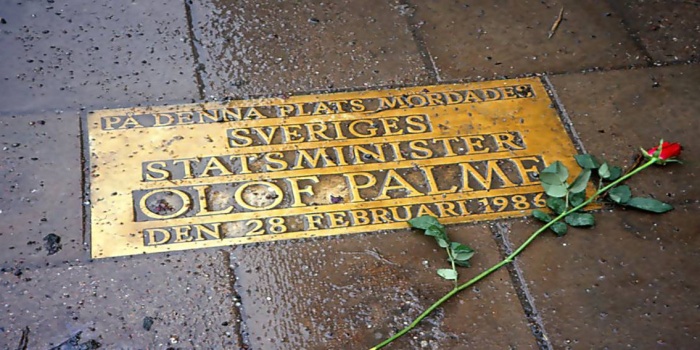
The person who took over the investigation after Holmer claims that the assassination was not organized but the act of a single killer.
An ex-convict, drug dealer, and alcoholic living on the street where Palme was shot is taken into custody: Christer Pettersson. Called in to identify the killer, Lisbet Palme, at the prosecutor’s direction, identifies Pettersson. Pettersson is brought to court 3 years later and sentenced to life imprisonment. Pettersson, who repeatedly stated that he had nothing to do with the incident and that he was framed for the crime, was acquitted by the High Court, which ruled that his sentence was unjustified due to a mistrial.
Organized Murder
Larsson, an expert on the far right and racist organizations, is certain that this assassination was not carried out by a single killer. The 36 witnesses, whom the police ignored, say that there were men with walkie-talkies on the street. The police, however, did not find a walkie-talkie at the scene. A surprising development about the walkie-talkie happened in April 2019. In 1986, young people saw a walkie-talkie on the sidewalk and gave it to their friends as a birthday present. This evidence, which could not be found in 1986, is sent to the forensic laboratory for examination.
Let’s return to the Larsson investigation; when the existence of a document given to the foreign ministry before the murder and a call to the police came to light, two names came forward that Larsson encountered in his research on far-right organizations. A right-wing extremist man informs the foreign ministry 8 days before the murder that Palme will be killed. Another man, a Yugoslav mercenary, claimed that the CIA offered him money to kill Palme in November 1985. These allegations were ignored around that period.
Stieg Larsson accesses a highly classified document. This 19-page document explains how the CIA’s assassination teams are selected, how they are trained, and what kind of weapons should be used. So, is there a secret US-backed paramilitary organization in Sweden?
CIA in Sweden: Stay Behind
As Larsson deepens his investigations, he uncovers the existence of a secret CIA-backed organization in Sweden, as in many other countries around the world, that brings together anti-communist, right-wing extremists. This organization, called Stay Behind, consists of CIA-trained fanatics who have access to weapons. Could the organization, which was said to be passive during peacetime and active during wartime, remain silent during the term of a prime minister whom the United States did not welcome so much?
Since the Vietnam War, the US saw Olof Palme as a problem. Because Palme described the war as an atrocity, a horrible torture, and said that US policy was the equivalent of Nazism. He was at the forefront of the anti-war march with the North Vietnamese ambassador. During the Cold War, he opposed the armament of the USA and the arms race in general. Sweden was in a critical position both geographically and politically during this period. The US, which believed that the Soviets would take Sweden, was especially unhappy with Palme’s speech in Havana in 1975, in which he ended with “Long live the friendship of Sweden and Cuba.”
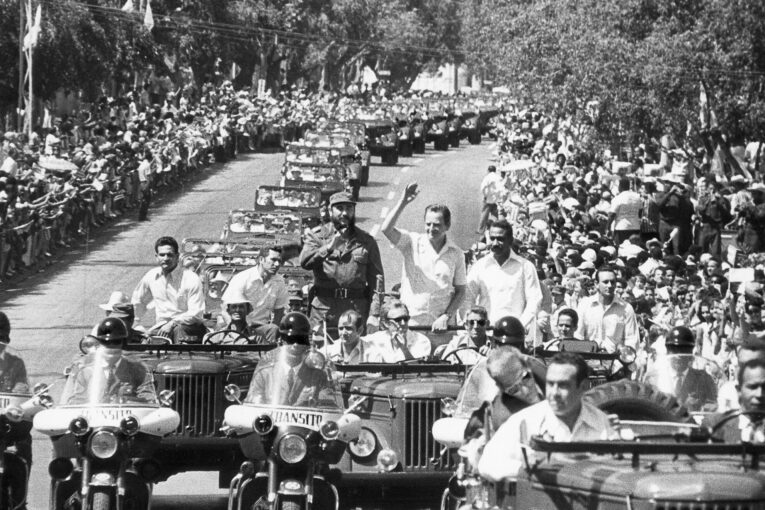
After Larsson’s exposé of the Stay Behind organization, we meet Carl Corby in the documentary. Carl describes how his father, William Corby, the CIA chief, founded the secret organization.
Soviet Submarine Crisis
In 1981, a Soviet submarine allegedly carrying nuclear warheads ran ashore in Sweden. The Soviets said it was due to weather conditions and a faulty course, and the incident was investigated. Similar incidents occurred in 1982, ’84, and ’86. Palme sends a note of protest to the Soviets and states that Sweden will defend itself in case of attack. Against the risk of attack, he chose secret cooperation with the United States.
Interviews made with Swedish intelligence officers suggest that the assassination of Palme was pinned on the CIA by the KGB. It is claimed that the USSR aimed to control or even occupy Sweden and that Palme’s death was planned by the KGB. Larsson’s research does not provide solid evidence in this direction. Therefore, Larsson does not consider this a strong possibility and focuses on other possible scenarios.
Estremist and “Palmehatte”
Olof Palme was the first person in Sweden to create a word with the name of a political figure: Palmehatte (Palme Hatred). Palme was a figure whose dead puppet was passed around at the rallies of right-wing parties, who was portrayed as the devil in newspapers, who was rumored to give Sweden to the USSR, and who was especially hated in the late 60s. Since Larsson had studied right-wing extremism for many years, he had drawn up a diagram of prominent names and organizations. This diagram was so detailed that Stocklassa says that if Larsson had lived, he would have exposed many names and revealed the murder connections.
In Larsson’s documents, three names stand out in the Palme Hate. Stocklassa intends to find these names and interview them as a freelance journalist and has done so with two living people.
Palme’s Three Great Enemies
Alf Eneström is the biggest Palme enemy. He funded every anti-Palme organization and wanted Palme to die. Stocklassa met Eneström in 2014 and recorded the meeting. Alf, who told police in 1986 that he was at home with his wife, says in this video recording that he was on the street where the assassination was carried out. We don’t know which testimony of Alf, who is quite old, to believe. He says that the police also hated Palme and that they had contacted him about the assassination, and gives details. When Stocklassa checked the documents again after this recording, he realized that the Swedish security police had closed the Eneström investigation.
Victor Gunnarsson; Larsson described him as a far-right lunatic. Gunnarsson said everywhere that Palme should be shot, and one day he said to someone walking down the street, “Be careful, one day you might get shot in the back for your ideas.” The police questioned Gunnarsson and released him. Gunnarsson, who was well known to the Yugoslav mercenary mentioned at the beginning, is traced back to the US, but he is dead…
Bertil Wedin: This name, which appears in Larsson’s documents with the notes “intermediary” and “dangerous,” is the most striking name in the documentary.
From South Africa to Northern Cyprus
Stieg Larsson and his contacts specifically investigated Bertil Wedin. They have access to important documents, including Wedin’s passports from many countries (would it surprise us that there is a Turkish passport among them?). So what does the word “intermediary” mean, and whose work does Wedin mediate?
Bertil Wedin served as a UN soldier in Congo in 1965. He is an active right-winger with connections to the CIA, MI6, and the Swedish Secret Police. Wedin lives in Northern Cyprus, which does not have an extradition treaty with Sweden.
Wedin’s connections, especially to South Africa, made Larsson focus on Wedin. Stocklassa, realizing this, is in talks with Larsson’s contacts. So what could the South African state have against the Swedish prime minister?
“Abolish Apartheid!”
Between 1948 and 1994, the Republic of South Africa advocated racial segregation as a state policy. Whites and blacks lived separately everywhere: separate train stations, separate trains, white-only benches, black-only neighborhoods… This went so far that some whites believed that blacks had just come down from the trees!
The African National Congress (ANC), which fought against white supremacy, was described as a violent organization by then-US President Reagan and British Prime Minister Thatcher. Palme played a key role in the ANC’s struggle. At the UN General Assembly in 1975, he spoke out against the regime in South Africa and the persecution and racism against Africans.

Palme’s government provided open and secret financial aid to organized liberation movements such as the ANC. The anti-apartheid movement was strong in London, Paris, and Stockholm. People showed their support for the ANC with rallies. This was something the South African state was not happy about, and suddenly, there were bomb attacks on ANC offices in these three cities. All these actions were thought to have been carried out by the South African secret service.
That’s where Bertil Wedin comes in. Wedin was in South Africa in the late 70s and early 80s and collaborated with the Secret Service. Stocklassa arranged an interview with Wedin in Northern Cyprus, again as a freelance journalist. This time, he records the interview with a hidden camera. This recording is one of the most interesting points of the documentary, so I won’t write the details. Wedin is never questioned by the Swedish police.
Stocklassa meets the secret service officer through his contact, who is a diplomat in South Africa. And Wedin’s South African connections are confirmed. After the end of the Apartheid regime, there was a flood of secret documents. Everyone is trying to sell classified documents to someone. Some of them are fake; some are real. One of these documents reaches Stocklassa’s contact. In this document, signed by the South African State Council, Palme is described as an “enemy of the state,” and his daily routine is known. A general at the time confirms this document.
We come across another Swedish name linked to South Africa: Craig Williamson. Williamson, who was in the ANC, is actually a spy defending apartheid! Although there are witnesses who saw him at the ANC conference in Stockholm a week before Palme’s assassination, Williamson says he was not there.
Stocklassa traces Larsson’s documents and makes the South African connection. Wedin, Williamson, the Secret Service… He gives all the documents, records, and information, including the secret conversations he recorded, to the police and hopes that the assassination will be solved after more than 30 years.
Police Reveal the Suspected Killer!
On June 10, 2020, the Swedish police and the prosecutor’s office held a press conference to announce that they had solved Palme’s assassination and revealed the suspect: Stig Engström, a graphic designer working for the company on the street where the assassination took place! Engström was known as “Skandiamannen” (Skandia Man) and was the “attention-seeking eyewitness” mentioned at the beginning of this article.
Stocklassa, who had submitted all the official documents to the police, was shocked by this revelation. The Skandia Man’s motive, his motivation for carrying out this assassination, is not explained. The murder weapon’s connection to Engström was not proven, and the witnesses’ descriptions did not match Engström. 34 years later, without any evidence or witnesses, the name given as a culprit was already dead in 2000. So the case was closed!
Author Thomas Pettersson wrote in his book, published in 2018, “The Unlikely Murderer,” that Engström was the culprit, and the mini-series The Unlikely Murderer, based on the book of the same name, was published in 2021. Opinion polls showed that only 19% of Swedes believed Engström was the killer. Neither the investigation nor the outcome satisfied anyone.
***
Political productions are a genre whose followers are very careful. Because everything is political! For example, in a Hollywood production, Cuba is a terrible country, Castro is a dictator, and Cubans are in agony! But when you watch the documentary Sicko by Michael Moore, a US Democrat, you see Cuba (at least in terms of health). In US and UK productions, the USSR-KGB commits horrible crimes, and the CIA and MI6 are against these evils; in East Germany, people try to escape to the West. South Korea is so free that it is the hope of those fleeing North Korea, but we don’t see those who flee to the south meeting the horrible face of capitalism after a while and regretting it. As I mentioned at the beginning of this article, the name Stieg Larsson was the first reason why I thought this documentary was reliable. It was not surprising to see that there were people in the documentary who believed that Larsson, Palme, and Stocklassa were KGB agents.
I recommend that you definitely watch this interesting and very important documentary. Especially to remember the events that changed the course of countries from the 70s to today, and to evaluate the present… Attention, you may be infected with the Palme Virus.
REFERENCES
www.stocklassa.com, www.stieglarssonfoundation.se, www.palmecenter.se, www.aftonbladet.se
